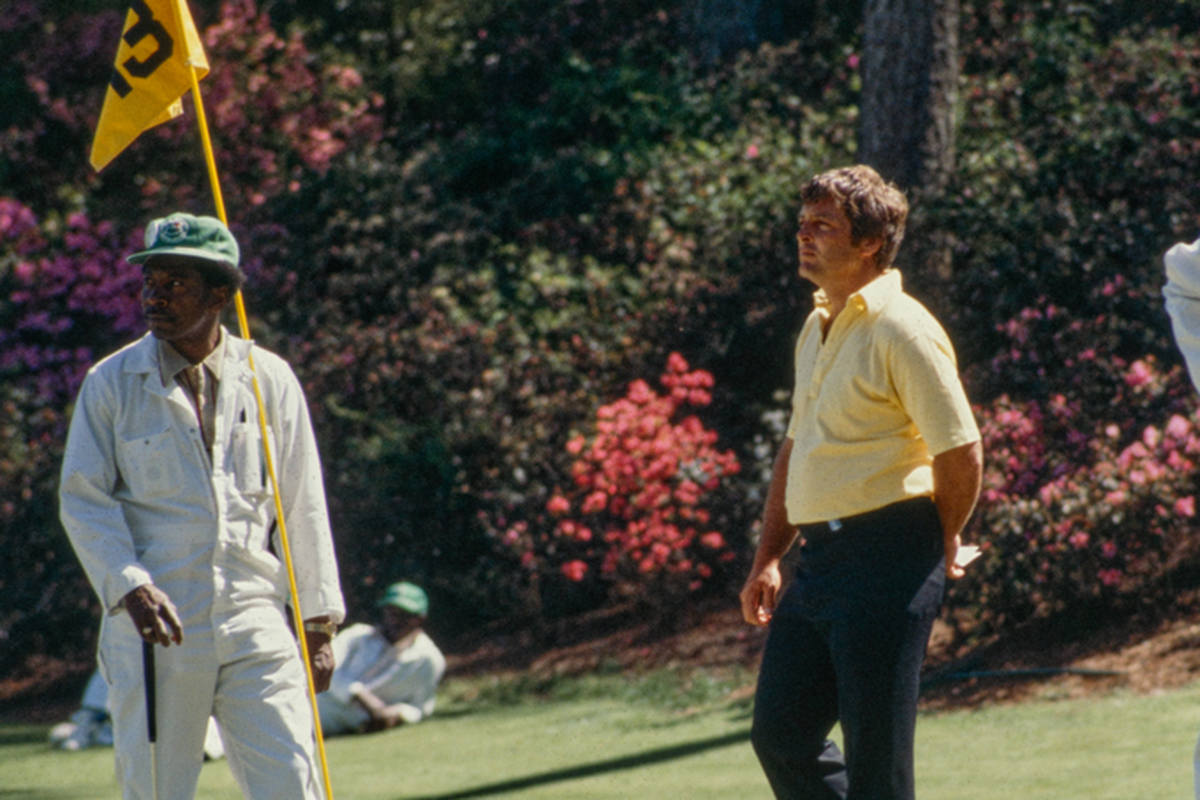AUGUSTA, Ga. — Five years ago, when former Augustan Ward Clayton was working as a co-producer on the golf documentary “Loopers: The Caddie’s Long Walk,” the thought occurred to him that he needed to update his 2004 book on Augusta National Golf Club caddies.
The documentary “was centerlined with (Augusta National caddies) Carl Jackson, Jariah Beard and Pappy Stokes and other Augusta caddies,” Clayton said. “That was the whole center line.”
So, since it went out of print in 2015, Clayton dived back into his book, which focuses on the years from 1934 (the first Masters Tournament) through 1982. Prior to the 1983 Masters, all golfers had to use Augusta National caddies. Starting in 1983, most golfers used their regular PGA Tour caddies.
It marked the end of an era. Only 22 of the 82 players in the field for the 1983 Masters used Augusta National caddies. After that, the numbers continued to drop.
The original book was called “Men on the Bag: The Caddies of Augusta National.”

Ray Floyd doffs his visor as caddie Hop Harris reaches over to shake hands after Floyd won the 1976 Masters.
“Someone said I tried to buy your book and it was $100 or something on eBay. I thought ‘Man, I need to find a publisher that I can complete this with,” said Clayton, who as the sports editor at the Augusta Chronicle from 1991-2000 and has worked for Masters.com since 2011. He now lives in Jacksonville, Florida.
The new publisher is Blair/Carolina Wren Press. On the 20th anniversary of the original, the updated book was released earlier this month with a new name and dust cover. It is now called “The Legendary Caddies of Augusta National.”
And instead of a generic picture of a group of Augusta National caddies, the cover subject is now Augusta native and caddie Jariah Beard, who helped Fuzzy Zoeller become only the third golfer to win the Masters in his first try, in 1979.

The book The Legendary Caddies by Ward Clayton.
Beard is one of the many Augusta National caddies who have died since the book was first came out. He died in 2023.
Willie “Pappy” Stokes, who shares the caddie record for most victories in the Masters with Willie Peterson at five, also died, in 2006.
“I updated every caddie and person that’s in the book,” Clayton said.
Jackson is the most famous of the original Augusta National caddies, with a record 54 appearances in the Masters. He was on the bag for Ben Crenshaw’s two wins, in 1984 and 1995, and stayed with him for 39 years.
Jackson. 77, the subject of a just-released documentary “Rise Above: The Carl Jackson Story” is one of three caddies who had winning bags still living. The others are Marion Herrington (Seve Ballesteros in 1980) and Ben Bussey (Craig Stadler’s caddie in 1982).
In addition to Stokes, other caddies who have died since Clatyon’s original book came out include Joe Collins, Eddie McCoy, Johnny Frank Moore and Walter Pritchett.
Clayton said “about 15 or 20” of the original caddies are still living, including Tommy “Burnt Biscuits” Bennett, who caddied for Tiger Woods in his Masters debut as an amateur in 1995.
Clayton updated the current caddie situation at Augusta National and added a chapter on the Sand Hills neighborhood, the home of many of the caddies. One of them was Jim Dent, who went to play the PGA Tour and found great success on the Champions Tour.
“I did a lot of research but it was really interesting,” Clayton said. “That neighborhood is so unusual. It’s between Walton Way and this historic cemetery and Augusta Country Club and Augusta National. It’s right in the middle of it. All those caddies used to be able to walk over to Augusta Country Club and they had a path going down No. 10 and 11 at Augusta Country that would take them behind No. 13 tee at Augusta National. That’s how they got to Augusta National by walking.”
It was through work on that chapter that Clayton came to realize that “a lot of these guys weren’t given much of a chance educationally, with medical assistance and things like that. They had a tough row to hoe. This isn’t just a racial situation, they were like any American kid growing up, they wanted to find somewhere to go make a few bucks, spending money so to speak. They could walk to Augusta Country Club and Augusta National so that was convenient. They could walk to the Bon Air (hotel) or go work in some of those big houses on Walton Way so they had a lot of opportunity in their little neck of the woods.”
For those caddies who weren’t close enough to walk to Augusta National, they took a bus. They were called the “8 o’clock bus crowd” and those who got to the course ahead of them had a better shot at landing members’ bag that day.
“If you had your own car, you had an advantage,” Clayton said.

